Foliage is an integral part of any landscape. While green, leafy plants like ivy and rhododendrons add color, they also cover walls, fences, and shrubs. Evergreen plants, like ferns and spruces, keep the area looking fresh year-round. With help from your landscaper or garden center, consider these plant foliage to add greenery to your landscape.
12 Best Plants for Foliage
1. Artemisia
Artemisia, sometimes called wormwood or mugwort, is cultivated for its silver, white, or gray leaves. The fragrant, deeply lobed, or finely divided leaves offer a gentle texture to the environment. Best planted in a mixed border as a background plant, an emphasis in a rock garden or herb garden, or in pots with a combination of other plants. This is one of the best plants for foliage and will add texture and color anywhere you plant it.
- Zones: 3 to 9
- Light: Full sun
- Height/Spread: 1 to 6 ft tall, 1 to 12 ft wide.

2. Boxwood
Boxwood is undoubtedly the most helpful plant in garden history, in addition to being gorgeous and straightforward to grow in the sun or shade and in various soil types. It has several uses in the landscape, but it is perfect for creating geometric patterns and hedges since it grows well on regular pruning.
- Zones: 4 to 9
- Light: Full sun to shade
- Height/Spread: 1 to 12 ft tall, 2 to 8 ft wide

3. Caladiums
Caladiums, commonly known as “Angel Wings,” provide a wonderfully unusual appearance in a garden. They feature big, arrowhead-shaped leaves in various green, red, pink, and white colors. Caladiums are both simple houseplants and wonderful outdoor plants. When designing a landscape, it’s important to balance plants for foliage with those that offer blooms, to create a well-rounded and visually appealing space.
- Zones: 9 to 11
- Light: Partial to full shade
- Height/Spread: 12 to 24 inches tall, 8 to 24 inches wide
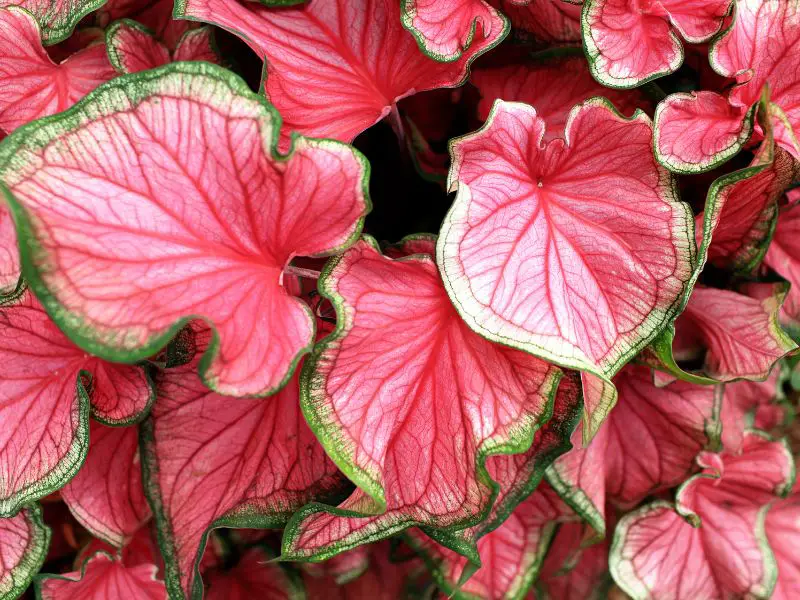
4. Coleus
They boast some of the most spectacularly colored leaves, with combinations of green, yellow, pink, red, and maroon. Additionally, coleus leaves come in a broad range of sizes and general forms. No matter where you want to plant coleus, you may find a suitable variety. Plants for foliage are not just limited to green shades, but can also include those with colorful leaves.
- Zones: 10 to 11
- Exposure: Partial sun to shade
- Height/Spread: 6 to 36 inches tall, 12 to 36 inches wide
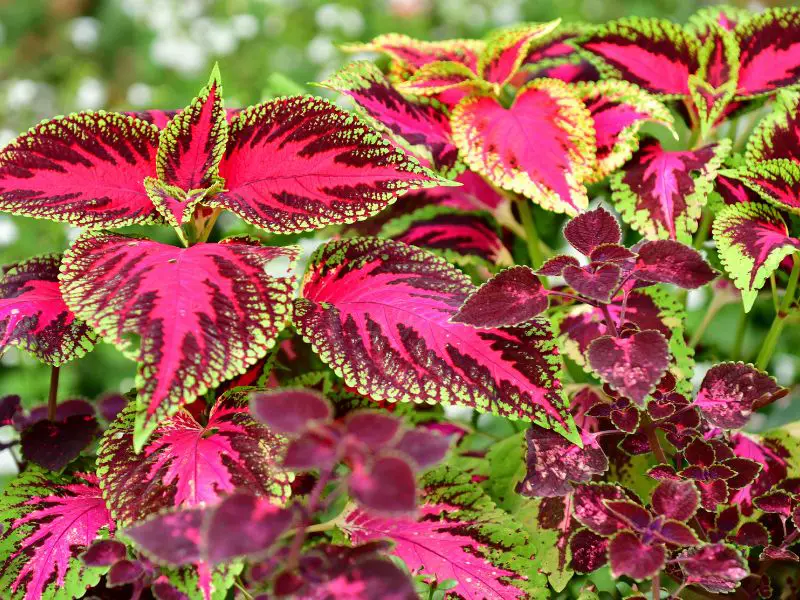
5. Coral Bells
Coral bells are generally planted for their evergreen or semi-evergreen foliage, which comes in various colors and forms. It gets its name from the drooping bell-shaped blooms. This hardy perennial can thrive in different soil and light conditions with little care, making it ideal for beginner gardeners. Best planted in a forest border, in a container garden, to cover a walkway, or as a groundcover, along with other plants.
- Zones: 4 to 9
- Exposure: Partial sun to partial shade
- Height/Spread: 6 to 18 inches tall, 12 to 30 inches wide

6. Ferns
Ferns are one of the best plants for shade gardens. They make borders, beds, and containers look full and lush. Plants can be as small as those on the forest floor or as big as tropical tree ferns. These leaves are usually green, but they can also be silver, white, gold, orange, or purple. Its leaves look like swords and have finely cut edges, which can go well with many groundcovers, perennials, and shrubs that like to grow in the shade. Some gardeners prefer plants for foliage over those with flowers, as they can provide year-round interest and require less maintenance.
- Zones: 3 to 11
- Light: Partial sun to shade
- Height/Spread: Depends on the specie

7. Lamb’s Ear
Lamb ear plants have soft, fuzzy, gray leaves that are fun for kids to rub. They are also fun for gardeners who want a velvety texture to soften the edges of a walkway or a downy gray color to set off nearby pastels. Don’t be afraid to mix and match different types of plants for foliage, to create a dynamic and interesting garden design.
- Zones: 4 to 9
- Light: Full sun to partial shade
- Height/Spread: 6 to 18 inches tall, 12 to 36 inches wide
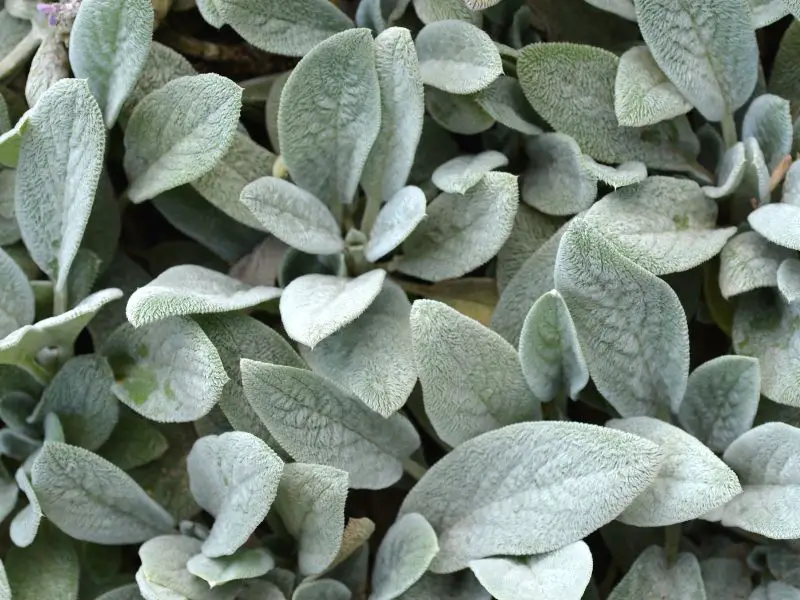
8. Persian Shield
Even though it comes from Myanmar (Burma), not Persia, it is called Persian Shield because the leaves look like small battle shields from feudal times. The Persian Shield plant’s pale purple flowers aren’t as pretty as its leaves. This plant can be grown outside but is much better planted in a pot.
- Zones: 8 to 10
- Light: Full sun or partial shade
- Height/Spread: 2 to 3 ft tall, 3 to 4 ft wide
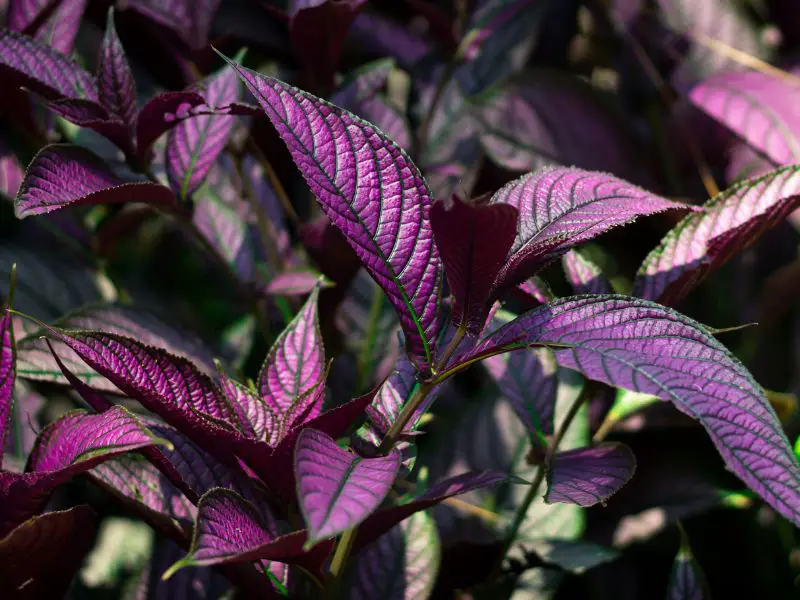
9. Vinca
Vinca minor, sometimes known as periwinkle, is a hardy plant that requires little care and doesn’t attract pests. It has attractive broadleaf leaves and blooms that do well in either full sun or partial shade. Additionally, it is perfect for creating ground cover and is well-known for the creeping manner in which it grows.
- Zones: 4 to 11
- Light: Full sun
- Height/Spread: 8 to 12 inches tall, spreads 12 to 18 inches
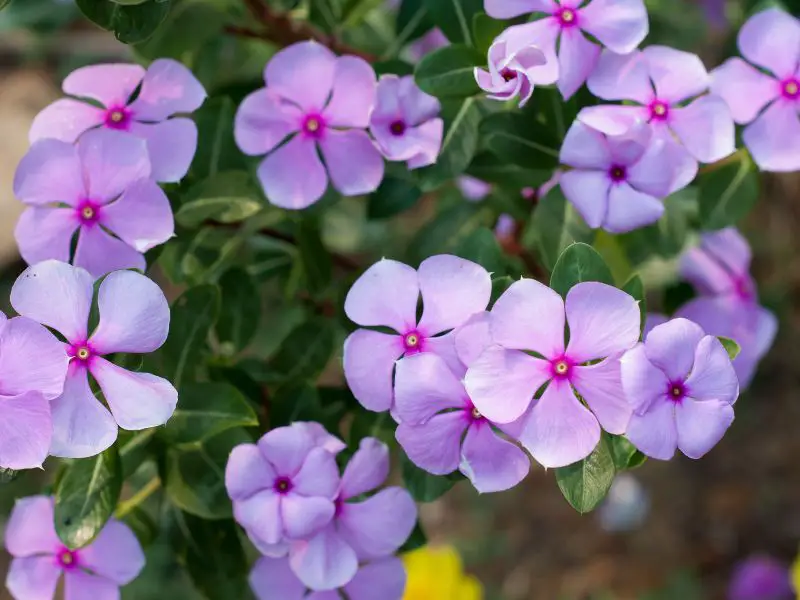
10. Canna
Canna lilies are strong, herbaceous, tropical-appearing perennials that bloom in the southern summer. Cannas have gone between periods of style during their long and rich history and are presently seeing a comeback after the post-World War II low. Use as a mass in beds or borders, as a focal point in containers, or in tandem with other heat-tolerant types.
- Zones: 7 to 11
- Light: Full sun
- Height/Spread: 1 to 8 ft tall
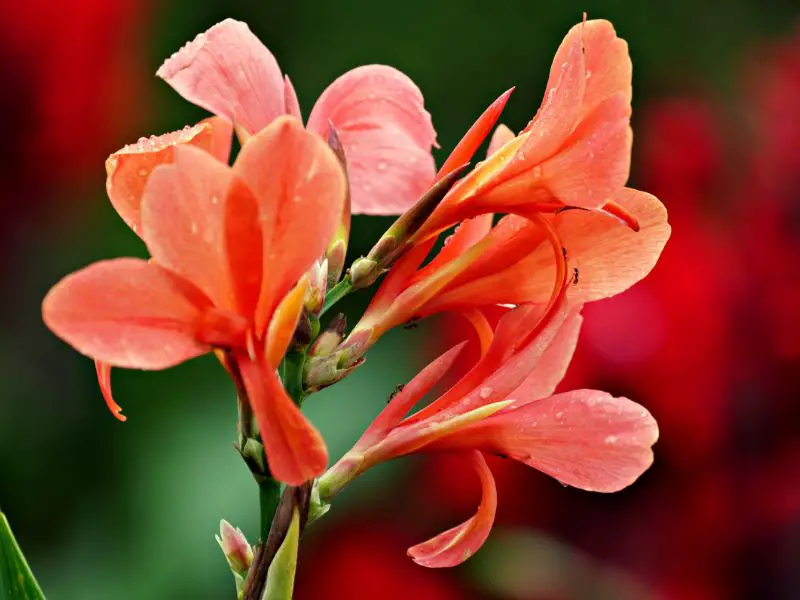
11. Hosta
Hostas are perennials with beautiful foliage from spring through frosty months. They are simple to cultivate, need little care, and can survive a long time. They will expand in size and beauty each year. Hostas seldom, if ever, need division, and they thrive the best when left alone. One of the advantages of plants for foliage is that they can thrive in low-light conditions, making them a great option for shady areas.
- Zones: 3 to 9
- Light: Partial to dappled shade
- Height/Spread: 2 inches to 4 ft tall, spreads 6 ft

12. Lungwort
Lungwort beautifully blooms in early springs, but they don’t stick around for long. Fortunately, the leaves are drenched or covered in silver or white, and they will continue to be a delightful sight for the growing season. These short, slow-spreading plants ultimately form beautiful carpets with iridescent bursts of light.
- Zones: 3 to 9
- Lights: Full sun to partial shade
- Height/Spread: 7 to 9 inches tall, spreads 1 to 2 ft

Bottomline
Now that you know which plants thrive in the sun vs. shade, you can choose the most appropriate plants in your garden! Remember, before you grow any plant, please do your research and only plant those plants that match your climate and your zone.
Like trees, choosing low-maintenance plants for your home can save you time, energy, and money. Light-colored plants are better outdoors, while dark-colored plants prefer indoor places. Choose plants that complement your home’s exterior color to give your garden a homey feel.
If you have large expanses of unbroken color, choose plants that vary in color. Incorporate plants of differing heights, leaf shapes, textures, and flower colors for a cottage garden feel. Keep in mind that natural colors offer the most soothing garden. Copper, lavender, peach, and sage green go well with almost any home exterior.
We hope this quick write-up helped clear up a bit easier when choosing the best plants with beautiful foliage. As always, we hope you enjoyed our post and Happy Gardening!
Next Read: Fast Growing Trees, Beautiful Hanging Plants, Best Home Office Plants

